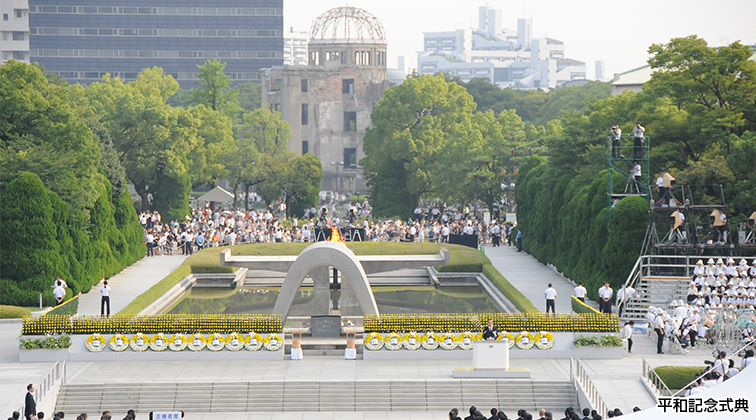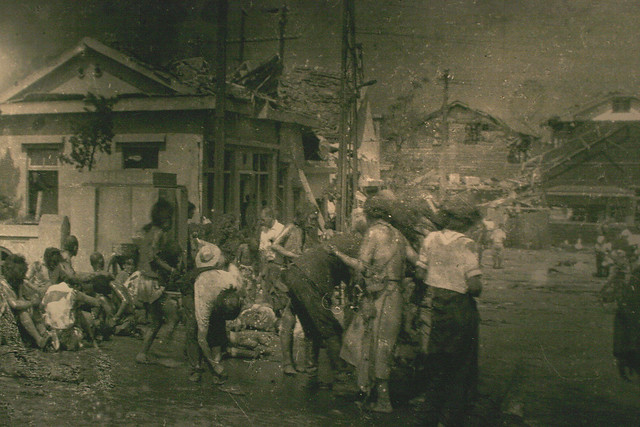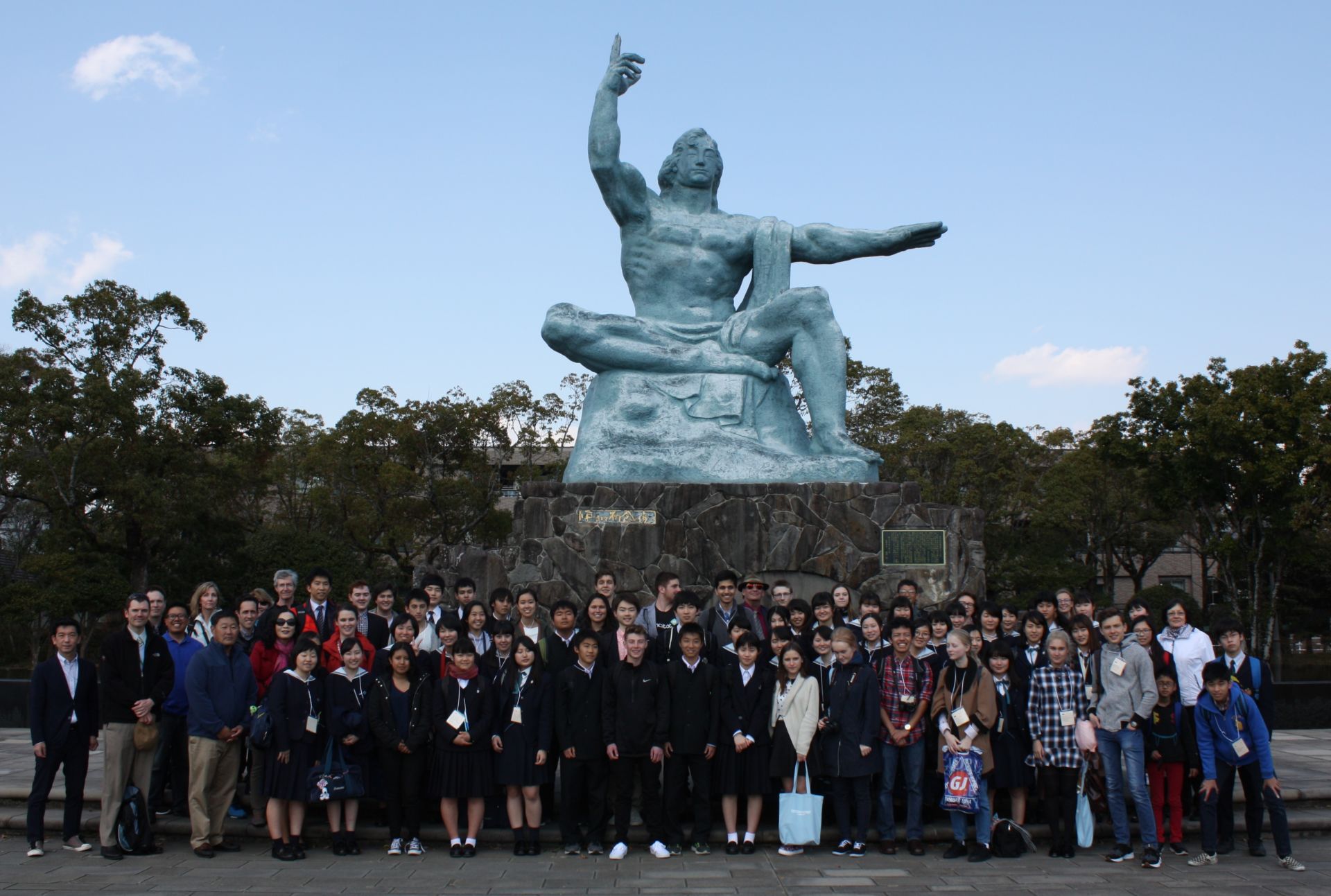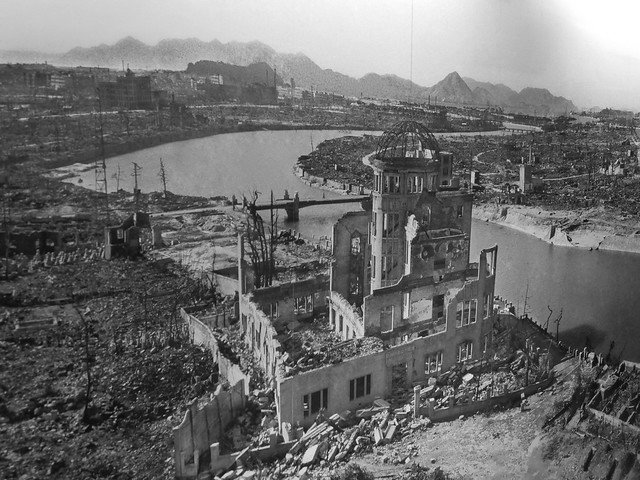“Little sister with a bowl cut/head spraying blood/embraced by Mother/turned raging Asura.”
At this year’s Hiroshima atomic bombing anniversary, Mayor of Hiroshima, Kazumi Matsui quoted this heart-wrenching poem written by a woman who was five years-old when the first atomic bomb was dropped in the city. The Mayor asked young generations in particular – future leaders – who had never experienced war, to listen carefully to cry of the Hibakusha – atomic bomb survivors.

“Remembering Hiroshima and Nagasaki” — a familiar phrase. But are we really making enough efforts to truly remember what happened on August 6th and August 9th of 1945? Are we actively learning what happened in those two cities obliterated by an atomic bomb, and the unspeakable suffering that Hibakusha have endured?
In Hiroshima, the uranium gun-type bomb detonated and killed an estimated 140,000 people by the end of 1945. Three days later, the plutonium implosion bomb was dropped in Nagasaki, cultivating approximately 74,000 deaths by the end of the year. The surface temperature at the hypocenter of the bombing was approximately 3,000 to 4,000°C. Iron melts at 1,500°C. It is almost unfathomable how human beings were melted, incinerated, and carbonized there. Those who survived were wounded so deeply — both physically and psychologically — and had to endure extreme hardships that are beyond description.

We should never forget what nuclear weapons can do to human beings, and Hibakusha’s stories must be remembered. Seventy-four years later since the bombings of Hiroshima and Nagasaki, the threat of nuclear weapons still remains.
This year’s atomic bombing memorial days came amidst a deteriorating global security environment surrounding nuclear weapons issues. Nuclear disarmament is at a standstill, while uncertainty and backlash over prospects for achieving a world free of nuclear weapons intensify. The 1987 landmark nuclear arms control treaty, the Intermediate-Range Nuclear Forces Treaty (INF) between the United States and Russia expired on August 2nd of this year. The Cold War-era treaty prohibited both countries from possessing, testing, and deploying ground-based ballistic and cruise missiles with ranges of 500-5,500 km (310-3,400 miles). The INF treaty was an essential pillar of nuclear disarmament. Today, the risk of nuclear war is higher than generally perceived. However, public concerns about nuclear threats has declined significantly since the Cold War, and apathy is prevailing despite increasing nuclear risks.
As we digest news reports of the tenacious pursuit of nuclear weapons by North Korea, the flippant nuclear rhetoric of the current U.S. President, and the demise of the U.S.-Russia arms-control architecture that kept the Cold War from going “hot,” we should all realize that there is no deus ex machina summitry coming to save us from the weapons of our own invention.
On the contrary, we should enhance the norm against nuclear weapons among the public, which will eventually have significant impact on world leaders. Conclusively, the accounts of those who experienced the horrific nuclear devastation are as vital as ever.
The average age of Hibakusha is now over 82 years old. Soon there will be no more Hibakusha in this world.
Editor’s Picks — Related Articles:
Disaster Management: Lessons Learned for Communities Near and Far
Sustaining Destruction: Nuclear Weapons and the SDGs
Nuclear Poker: Players Involved with the North Korean Standoff
The bombings of Hiroshima and Nagasaki are extensively taught at schools in Japan and abroad, but not so many young people have the chance to listen to the Hibakusha’s testimonials directly – to learn what really happened under the mushroom clouds.
It is crucial for young generations to learn about the real-life impact of the use of nuclear weapons. If we are able to better convey the threat of nuclear weapons to prevent any future use, we can eventually eliminate such weapons.
Through my privilege and honor of working with the youth, I have witnessed first-hand, time and time again, the galvanizing effect of disarmament education in engendering passion, commitment, and informed activism for disarmament among students.

When I bring Russian, Japanese, and American students to our Critical Issues Forum (CIF) — our international conference in Monterey, CA — they learn more than just about the horrors of nuclear war. The cross-cultural and cross-generational experience of disarmament education imbues them with the knowledge, compassion, and determination that we need to progress in beating back the seventy-four-year-old threat of nuclear weapons. Disarmament education can also contribute to cultivating empathy among young generations.
The peace that will save us will not be wrought from “fire and fury,” but through – as late Nagasaki Hibakusha Katsuji Yoshida once said — “understanding the pain of others.”
In May 2018, United Nations Secretary General, Antonio Guterres, launched an ambitious disarmament agenda, “Securing our Common Future,” with an aim to reinvigorate the disarmament process. He emphasized the importance of education: “more education and training opportunities should be established, in order to empower young people to be a force for change and disarmament.” As the Agenda stresses, the young generations are “the ultimate force for change.”
The youth of the world should become fully aware of how dangerous nuclear weapons are to their future, and start to work actively to reduce the risk of such weapons being used. The Hibakusha’s testimonials should prove that nuclear weapons are not a necessary evil, but the ultimate evil. We must not further any justification or sanitization for the use of nuclear weapons. Disarmament education can be the basis of such understanding.
When we understand the inhumane nature and catastrophic humanitarian consequences of any use of nuclear weapons, it is inevitable to prohibit such weapons categorically.
Hiroshima mayors called on world leaders in this year’s peace declaration on August 6th, to “respond to the yearning of civil society for entry into force of the Treaty on the Prohibition of Nuclear Weapons (TPNW), a milestone on the road to a nuclear weapon free world.”
Many, including myself as Japanese, believe that Japan has a moral responsibility to lead efforts to create a world without nuclear weapons as the only country to have suffered the effects of the use of nuclear bombs in wartime. While Japan officially states that it will pursue a world free of nuclear weapons through building bridges among states with divergent views, the government continues to oppose the TPNW.
The Japanese government’s perennial dilemma—strong public anti-nuclear weapons sentiment and the status protected by America’s extended nuclear deterrence—seems to be perpetuated. At the very least, there seems to be no short-term solution.
However, all of us — especially the youth — owe the task of the total elimination of nuclear weapons to the survivors. To accomplish the goals of peace and security in a world free of nuclear weapons, we need to overcome the tendency to maintain the status quo.
Education will empower young generations, and they can in turn become a source of positive change with their innovative and creative ideas. It is time to end the specter of another Hiroshima and Nagasaki, and to end the nuclear age, at last.









